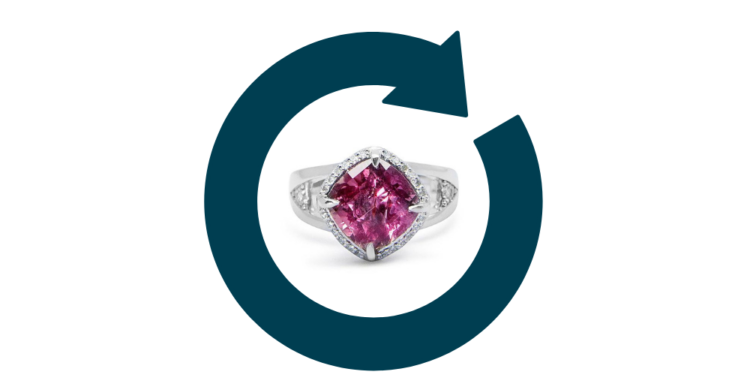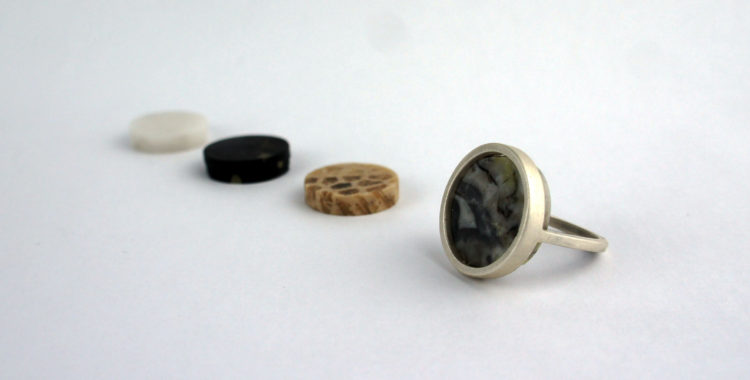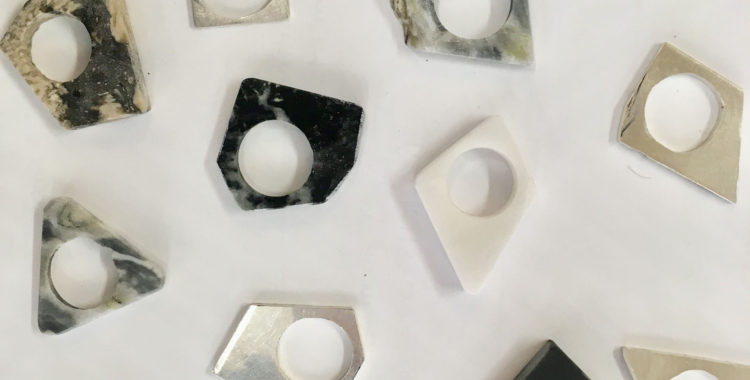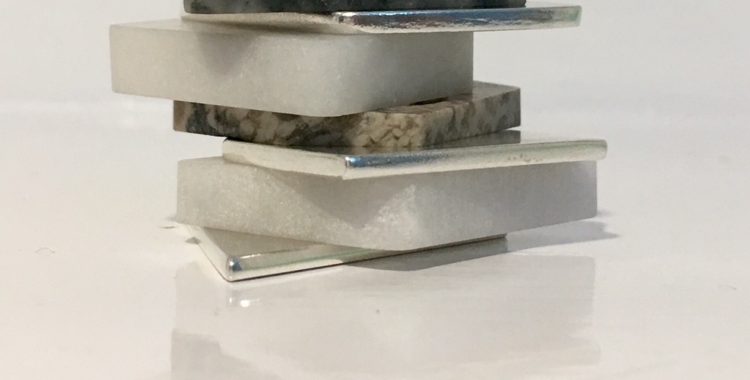This is the second blog in our three-part series on how the jewellery sector can move towards a circular model.
- Read "Part 1: How can jewellery be circular?" here
- and Part 3 Part 3: Circular Jewellery: An Approach to Doing Better Business here.
The practice of circularity is focused on and grounded in the technosphere - a human construct designed to support the conversion of raw materials for human consumption beyond our simple survival needs of food and water. Cycling materials only happens with human intervention. The intentional design of a system to maximise materials efficiency is what separates circularity from sustainability, and will be our focus for this blog.
What is sustainable design?
Sustainable design is based on the premise that the product is developed and manufactured in a way to reduce negative impacts on the environment, and on the health and comfort of living creatures.
The basic avenues to sustainability are to reduce the consumption of non-renewable resources, minimise waste, and create healthy, productive environments.
Sustainable design principles include the ability to:
- minimise non-renewable energy consumption
- limit use of non-renewable resources
- use environmentally friendly products, processes, and materials
- protect and conserve water
- enhance indoor environmental quality
- optimise operational and maintenance practices
Utilising a sustainable design philosophy encourages decisions at each phase of the design process that will reduce negative impacts on the environment, without compromising the bottom line. It is an integrated, holistic approach that encourages compromise and tradeoffs. Such an integrated approach positively impacts at all phases of a product’s life-cycle, including design, manufacture, use, and decommissioning.
Why the focus on the product development process?
Nearly 80% of a product's environmental impact is decided during the design phase, making it the obvious place for an intervention to transform products and services to become more sustainable. However, the ecological goal of durable products that are easy to repair and disassemble conflicts with the economic imperative to drive down manufacturing costs and drive up customer demand.
The ability to optimise material selection based on environmental impact, in addition to cost and performance, is crucial to today’s manufacturers. Recovery material flows (i.e. materials that are someone else’s waste but can be your input) should inspire designers and product development managers. Upstream decisions made by designers can massively affect material recovery and recyclability at the end of that product’s life.
A circular economy is predicated on better design. Circular design should concentrate not only on the design of improved recovery infrastructures, new recycling technology, and materials reuse, but also on the questions of what the product should be, how it works, and how it satisfies customer needs in more efficient and effective ways. Businesses which can successfully move towards a circular economic model will be more efficient, profitable, and investable.
How do I design sustainably?
Some key parameters by which design influences social and environmental impact are captured in the following questions:
- Where are the materials I am using coming from?
- What kind of standards are implemented in my supply chain? Are these credible and do they provide reliable assurance of risk management or sustainability gains?
- Can I use any resource recycling system in my own studio/ factory/ producing facility?
- Can I help my customers prolong their products’ lifetime by actions they can do themselves? Or by using my services?
- Do I inform and educate my consumers about ongoing design services I can offer them?
Jewellers typically design based on aesthetics and functionality. Incorporating circularity into the design process requires the jeweller to think ‘cradle to cradle’ rather than ‘cradle to grave’. No longer is the product destined only for inheritance or the pawn shop, and as such new possibilities emerge. When the life cycle of the product and the availability of more sustainable materials are the basis of the design, greater creativity may be necessary.
For example, a customer wants a sapphire ring. Usually, a bespoke designer would work with the customer to design the product jointly and then go seek the stone. The lack of supply of ‘ethical’ gemstones can make it impossible to use a more sustainable option. But if the designer were to start from the ethical stone and design around that, we end up with a more sustainable product. Why? Because flexible purchasers build sustainable markets for ethical gems, which often come from small producers and specialist traders, such as nineteen48, Capricorn Gems, Fairtrade Gemstones, Columbia Gem House.
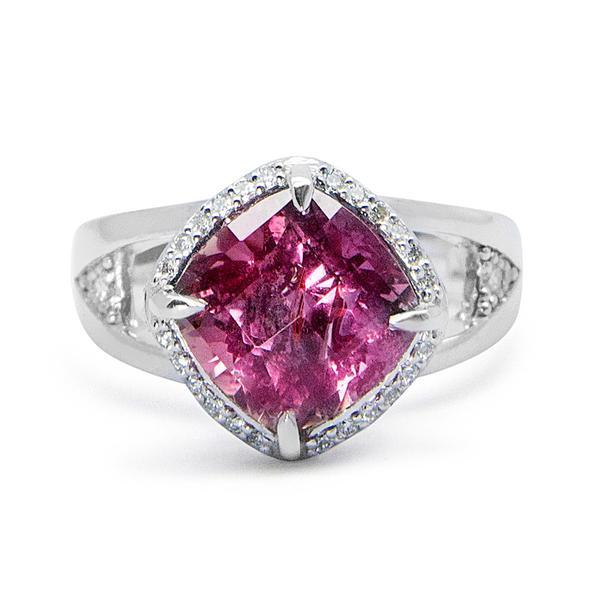
Many jewelers offer services to extract gemstones from old jewellery products and build a bespoke article, using the recovered gems, with some prioritising this as part of their offering (see Hattie Rickards, Harriet Kelsall). This is more likely to be effective for larger gems, where the chance of damage is less. Presently, small diamonds in old jewellery are likely to be sacrificed while trying to separate the metal from the diamonds since they are worth less compared to the metal (here’s a circularity issue for someone to solve).Another opportunity arises from consideration of the need to disassemble the product at a later date, when the customer is no longer enamoured with the ring or if the proposer did the picking and not to the proposee’s taste! Or perhaps the product is flexible, and in fact several products in one but using less materials than if each possible version were produced separately. Designing for disassembly, reconfiguration, and flexibility provides the user greater choice and extends the lifespan of the product.
Some designers are upcycling other products into their jewellery, making use of buttons, PET bottles, fishing nets, old books or metal recovered from old circuit boards.
How can sustainable design add value to my products?
Pursuing sustainable design can increase the value of the final product in the eyes of the consumer as well as the maker. Designing for emotional attachment, co-creation, and customisation extend the lifespan of the product as it is embued with more meaning and enjoyment for the wearer.
Emotional attachment
We are transitioning from an era of overabundance into one of resource scarcity. Decades of surplus wealth and overconsumption have generated a culture of wastefulness. We have come to depend upon single use products either through embedded behaviours (e.g. forgetting to put the spare canvas bag in your handbag) or systemic ‘lock-in’ (e.g. only having an option of eating at a fast food joint with all its disposable cutlery, packaging, etc.). Nonetheless, there is evidence that a personal and emotional connection to an item can increase the life-span of the product by either incentivizing people to use it for longer or encouraging them to choose a more durable item at the outset. A design element in the product that can signify the user’s emotions or personal story contributes to the likelihood of this use phase being extended. Consider an item that you inherited from a family member, or a product that symbolises a special event or person; in either case it is harder to throw it away.

Customisation
An opportunity to adjust the product exactly to the consumer's sizes, style, personality, and wishes inevitably leads to a better solution for the consumer. This strategy extends the use phase because it leaves the consumer with a product that better answers his or her wishes and dreams, or better fits their lifestyle or needs.
Co-creation
In recent years, we are seeing more and more examples of products and brands that involve consumers in the design process. Co-creation gives the consumer a higher personal stake in a bespoke product. An option for the consumer to choose colors, sizes, and even play around with some design elements leads to a stronger connection to the product and even the brand.
In our third and final blog of the series, we explore how a jeweller can build circularity into the product life cycle and their operations.


